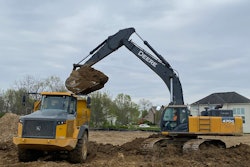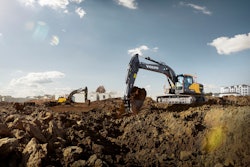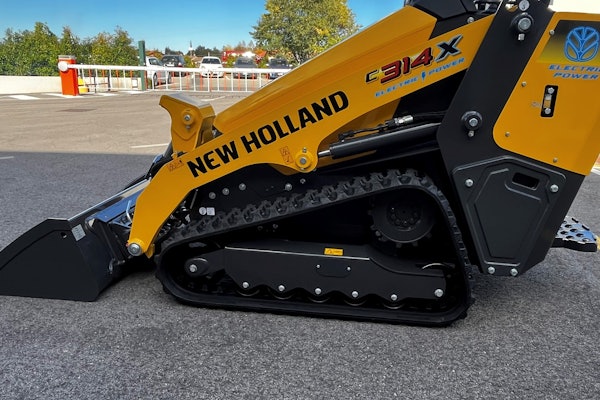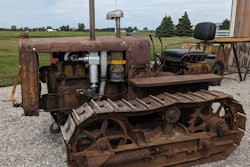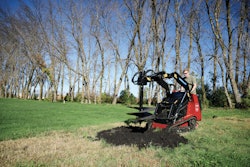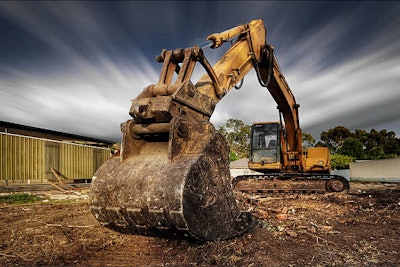
When Ritchie Bros. Auctioneers acquired SmartEquip for $175 million in September, Ritchie CEO Ann Fandozzi said it would give Ritchie "asset-specific full-lifecycle parts and service support" to dealers, OEM partners and equipment buyers.
Of equal importance as SmartEquip considered suitors was continuating its multi-brand approach in the construction industry, says Alex Schuessler, SmartEquip founder and president, international group, talking with Equipment World.
 SchuesslerSmartEquip
SchuesslerSmartEquip
In turn, SmartEquip, which provides software to support equipment lifecycle management, gives Ritchie a play on the parts, service and maintenance side of things, says Jim Kessler, president and COO, Ritchie.
"We knew how long it would take us to do this on our own and replicate what SmartEquip has already built," Kessler says. "So for us it was the perfect match. We had customers who need this service and we weren't able to provide it; it was an open hole for us. We know what the equipment is. We know where it is in the life cycle, how many hours on it, but we weren't helping in that part of the value chain."
But Kessler also emphasizes that the SmartEquip deal doesn't mean it is in the parts stocking business. Rather, Ritchie is looking to add customer ease and value, he says.
"The magic in all of this is the equipment life cycle, and Ritchie has done phenomenal work in focusing not just on the moments that equipment changes ownership, but also what you do to support the equipment owners, dealers and manufacturers," Schuessler says.
Hidden owners
This especially comes into play with second and third owners of a machine where perhaps dealers and OEMs lose track of them. "We were looking at ways of ensuring that they have a longer view across the equipment life cycle and across the number of owners," Schuessler says.
"We've long been aware that there are tremendous opportunities there with that second, third or fourth owner," Schuessler says, "and it's been frustrating because we've had no systematic way of supporting them. I think we'll be able to help both equipment owners and dealers right off the bat."
The trust built between SmartEquip and its dealer and OEM customers has been hard fought, Schuessler says. The firm began in 2000, right on the heels of the dot-com craze when everything was about reducing the number of intermediaries in a transaction.
"That's not at all what we wanted to do," Schuessler explains. "We wanted to bring efficiency to the relationships of dealers and OEMs on one hand and the fleet owners on the other." In the process, SmartEquip gave OEMs and dealers a systematic way to tie in deeper into the life cycle and go into those second and third owners. "Now with Ritchie we can automatically do this together, and we can offer it straightaway," he says.
For the foreseeable future, SmartEquip will continue to operate as a standalone business headquartered in Norwalk, Connecticut.
Both companies have a global footprint. SmartEquip has been operational in Europe for around 10 years, Schuessler says, and just announced a previous agreement with Tokyo-based Diamond Construction Equipment and that its network was fully operational in Japan. (Diamond Construction is co-owned by four large Japanese equipment rental companies and Mitsubishi.) Ritchie's purchase of SmartEquip allows it to "be so much more responsive with our international business," Schuessler says.
Supply chain perspectives
You can't have a discussion with supply chain front row players such as Ritchie and SmartEquip without delving into the issues that are plaguing all industries these days. Schuessler sees two issues: components and whole goods.
"In Japan, rental fleets tend to hold on to their equipment two to three times longer than they would in North America or Europe," Schuessler says. "Of course, as equipment gets older, parts consumption goes up, as do service needs. That means two things. For those fleets that tend to have a longer life, the value we can bring to them by making those parts efficient also goes up over time relative to other parts of the world. If you take a step back to look at the overall life cycle, the contribution that technology brings to the lifecycle costs in an aging fleet tends to be higher than it is when you only hang on to it for two to four years.
"On the parts side, the shortage means that the search cost is higher, and so much of what SmartEquip does is reduce the search costs. When we began as a company, it was not unusual for a technician to spend as much time looking for the right part from a preferred supplier as they would holding a wrench in their hands. While we can't change the scarcity aspect of it, we do have the ability to find the parts out there that pertain to a particular serial number."
In this tight supply market, Ritchie is focused on how it can add value, Kessler says. "We're also working on our technology to make sure that when you are ready to transact in the future it's easy to do," he says. For example, Ritchie's Inventory Management System "makes it easy to transact with us," he says. "There are other value-added things that our customers would appreciate."
"We're very happy to have them on board," Kessler says. "We don't have a rush to try to force something, so we want to make sure we build a technology that's going to be easy for everyone to use. This isn't about Ritchie trying to change it and make it something that it's not. We want to make sure that when the marketplace is ready that it's easy to use, and everyone's going to have full transparency of how it's going to work for them."
Schuessler says the real benefit will come when today's "spot technologies" — telematics, fleet management, etc. — are knitted together. "There's no new technology required; it's all about the workflow now," he says. "If a machine throws out a code, we should be able to order a part and have it waiting at the service bay with a work order already filled out and technician instructions on what needs to happen. Raising the efficiency is right there to be had."







